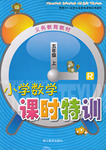题目内容
7.Look at the keyboard of any standard typewriter or computer."Q","W","E","R","T"and"Y"are the first six letters.Who decided on this arrangement of the letters?And why?People tried for centuries to invent the typewriter.In 1714in England,Henry Mill filed a patent for a machine called An Artificial Machine or Method for the Impressing or Transcribing of Letters,Singly or Progressively one after another,as in Writing.With this machine,whatever writing can be shown on paper or parchment,so neat and exact as not to be distinguished from print.That machine probably didn't sell because no one could remember its name!
The first practical typewriter was patented in the United States in 1868by Christopher Latham Sholes.His machine was known as the type-writer.It had a movable carriage,a lever for turning paper from line to line,and a keyboard on which the letters were arranged in alphabetical order.
But Sholes had a problem.On his first model,his"ABC"key arrangement caused the keys to jam when the typist worked quickly.Sholes didn't know how to keep the keys from sticking,so his solution was to keep the typist from typing too fast.Sholes asked his brother-in-law to rearrange the keyboard so that the commonest letters were not so close together and the type bars would come from opposite directions.Thus they would not clash together and jam the machine.The new arrangement was the QWERTY arrangement typists use today.Of course,Sholes claimed that the new arrangement was scientific and would add speed and efficiency.The only efficiency it added was to slow the typist down,since almost any word in the English language required the typist's fingers to cover more distance on the keyboard.
The advantages of the typewriter outweighed the disadvantages of the keyboard.Typists memorized the crazy letter arrangement,and the typewriter became a huge success.By the time typists had memorized the new arrangement of letters and built their speed,typewriter technology had improved,and the keys didn't stick as badly as they had at first.
41.Who invented the first practical typewriter?C
A.Henry Mill
B.Sholes'brother-in-law
C.Christopher Latham Sholes
D.Albert Einstein
42.The author thinks the machine invented by Henry Mill could not be sold becauseC.
A.it was difficult for people to accept new things
B.there were great disadvantages of the keyboard
C.the name of the machine was too long
D.the writing could not be distinguished from print
43.Sholes decided the QWERTY arrangement of the keyboard in order toB.
A.arrange the letters in alphabetical order
B.solve the problem of the keys jamming
C.cause the keys to jam when the typist worked quickly
D.compete with"ABC"key arrangement
44.We can infer that the QWERTY arrangement of the keyboardA.
A.keeps the typist from typing too fast
B.adds speed and efficiency of typists
C.is easy for typists to memorize
D.is the most scientific arrangement
45.Which of the following can be the best title of the passage?B
A.The Story of Christopher Latham Sholes
B.The Arrangement of the Letters on Keyboard
C.How to Invent the Typewriter
D.The First Practical Typewriter.
分析 本篇文章主要讲述了打字机的历史发展以及键盘上字母排列顺序的科学性,解释了键盘上的字母顺序的来源.
解答 41.C.细节理解题.根据第三段中的"The first practical typewriter was patented in the United States in 1868 by Christopher Latham Sholes",第一台实用的打字机专利在1868由美国的 Christopher Latham Sholes申请,可知C选项正确.故选C.
42.C.细节理解题.根据第二段中的"That machine probably didn't sell because no one could remember its name!",可推知,作者认为机器可能卖不出去是因为它的名字太长了,没有人能记住.故选C.
43.B.细节理解题.根据第四段中的"…his‘ABC'key arrangement caused the keys to jam when the typist worked quickly"可知,肖尔斯决定"QWERTY"这种排列,是为了解决"ABC"键这种排列所引起的"键堵塞"问题.故选B.
44.A.细节理解题.根据第四段中的"…his solution was to keep the typist from typing too fast."和"The only efficiency it added was to slow the typist down…",可知QWERTY排列只能让打字员的打字速度慢下来,故选A.
45.B.主旨大意题.本文主要介绍了键盘上QWERTY这种字母排列顺序的来由.第一段中的"Who decided on this arrangement of the letters?And why?"是全文的主旨句,文章后面的内容都是围绕这两个问题展开的.故选B.
点评 本篇阅读题目较多.因此考生要重视文章的标题和文章的首句,因为文章的标题或首句往往就是文章的主题,有利于考生理解全文内容.

 小学课时特训系列答案
小学课时特训系列答案| A. | played;unnoticed | B. | had played;unnoticed | ||
| C. | played;unnoticing | D. | had played;unnoticing |
-He always encourages me to do I think I should.( )
| A. | what | B. | when | C. | how | D. | that |
| A. | however | B. | no matter what | C. | Whatever | D. | no matter which |
| A. | Whoever; when | B. | Whenever; which | ||
| C. | Whatever; where | D. | Whichever; while |